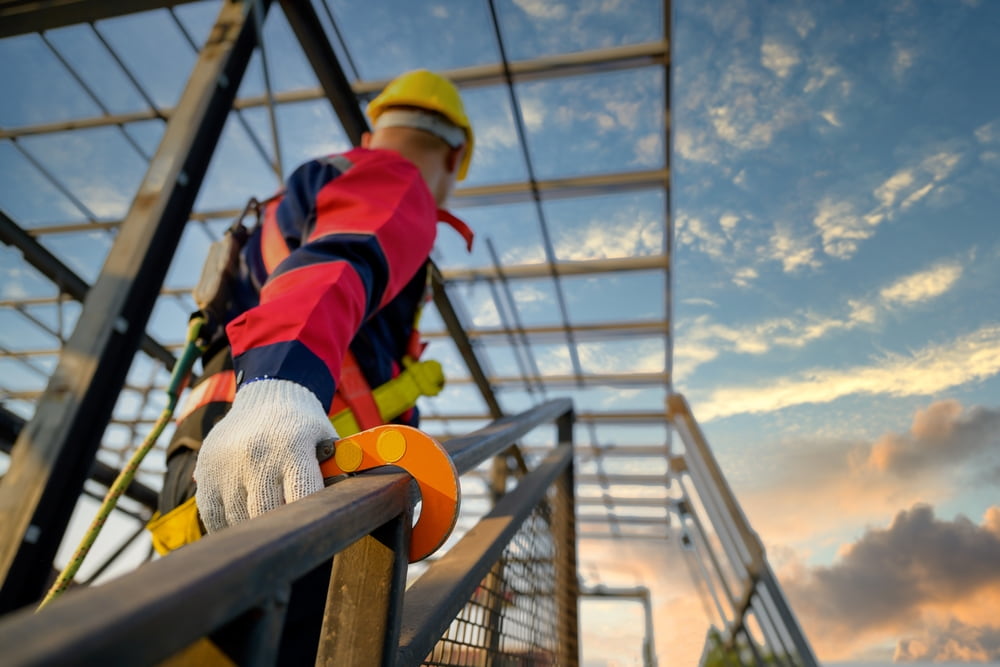New York labor code § 23-1.15 details when safety railings are necessary on construction sites. When necessary, the railings must be constructed in order to meet minimum requirements. If they are not assembled correctly, there is a potential for hazards in which a worker can fall from a high area or the structure can potentially fall.
Safety railings must be constructed as follows:
- A 2”x4” horizontal wooden hand rail between 36 and 42 inches above the walking level, and supported by 2”x4” vertical posts in intervals no longer than eight (8) feet
- A horizontal midrail measuring 1”x4”
- A toeboard measuring 1”x4” — an exception to this is when the safety railing is not adjacent to an opening occupied by people or installed at grade or ground level
- All safety railing hand rails must be smooth and free from splinters or nails
In matters where other materials are used in the construction of safety railings, the products must be assembled in a manner where it has equivalent safe and ensures safety.
NO FEES
UNLESS WE WIN YOUR CASE
Where Should Safety Railings Be Used?

It is important to know where safety railings should be at a construction site. For instance, if there is a trench, opening, or any other hazardous area, there should be guardrails that can properly protect the individual. Also, if there is a position where the worker must operate at a height, the structure or equipment used should have safety railings to help prevent the worker from falling. This includes walking or working surface higher than 21 inches where there is no wall or other structure.
These safety railings must be able to withstand a minimum of 200 pounds of force within 2 inches of the top edge and in any direction without causing the guardrail to deflect downward to less than 39 inches above the working or walking level.
Speak With Experienced NYC Construction Accident Attorneys
If a safety railing is not properly installed where it should be to prevent potential dangers from harming a worker, the injured party may be able to file a lawsuit against the negligent party. This includes the employer who did not provide the proper guardrails where necessary.
At The Perecman Firm, our New York City construction accident lawyers offer free consultations so you can better understand your potential case. We don’t charge a fee unless we are able to successfully secure compensation on your behalf. You shouldn’t have to deal with the consequences if your employer was negligent in providing the necessary safety precautions. Call today at (212) 577-9325 to speak with our team.